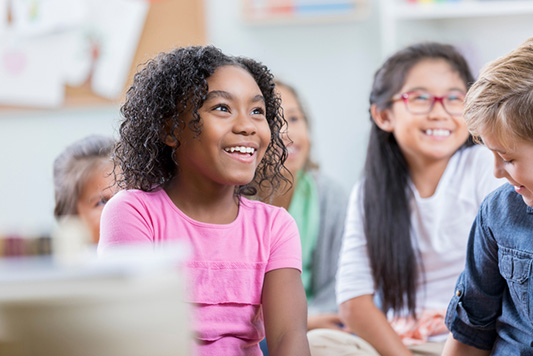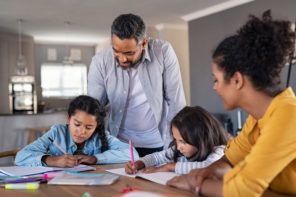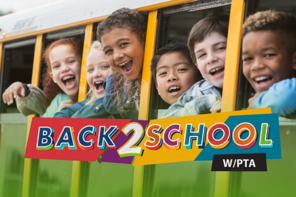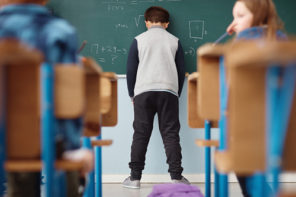Every parent wants their child to attend a great school—with teachers and resources to help them reach their full potential. But what does that look like? It’s difficult to ask for improvements in your child’s school without concrete ideas about what effective education looks like.
On a recent episode of Notes from the Backpack: A PTA Podcast, we sat down with Linda Darling-Hammond, Founder & CEO of the Learning Policy Institute to discuss. She gave us four key elements of a great school.
The school prioritizes relationships.
“Emotion and learning are completely connected in ways that I don’t think we understood previously,” said Hammond. “If you are in a setting where you feel attached, where you have secure relationships, where you feel supported, you will learn more effectively.”
Hammond adds that in effective learning environments, schools really work to create a positive school climate, with opportunities for teachers and kids to really get to know each other well.
The curriculum emphasizes critical thinking and 21st century skills.
Hammond says great schools are shifting towards developing skills for the future.
“Rather than sitting and memorizing a lot of information that you can Google, students need broader concepts and deeper understanding to learn how to problem-solve and think critically,” said Hammond.
Hammond recommends redesigning the curriculum and training teachers and school leaders to help create these kinds of settings with a focus on building these essential skills.
Student work—representing all students—is displayed.
Hammond says she looks at what is on display at the school with several questions and considerations in mind:
“You want to see that this is a school that’s about children and their work. And that work is exciting, engaging and clearly promoting thinking and problem solving,” said Hammond. “Also look to see that kids are getting equitable access to the work.”
She cautions that you do not want to see that there’s a tracking system in place that’s giving some kids boring worksheets while other kids are getting exciting opportunities for thinking and problem solving.
She also suggests ensuring that there’s multicultural imagery all around the school, so students see themselves in the curriculum—and in the opportunities.
The school encourages students to learn From mistakes and become caring citizens.
Hammond said to check out the classroom rules and discipline policies to gauge if a school is taking a punitive or restorative approach.
“You want a school where kids are learning to be good citizens in an active way, not just being told if you do this thing wrong, we’re going to do this bad thing to you, which really sets a different climate and tone,” said Hammond.
She cautions that these kinds of policies that relies on punitive measures—like taking away recess or library time—and lack support for learning or connecting the student to the school community.
Hammond says some schools encourage students to work together to create their own constitution for the rules that govern the classroom, which helps them learn how to become socially responsible and take care of one another.
“It’s about positive strategies for handling student misbehavior that’s supportive and restores order, and relies on students having the opportunity to reflect, problem solve and make amends to their school community,” said Hammond.
Learn more about best practices in education and advice you can use in the full interview with Linda Darling Hammond, available wherever you listen to podcasts!
Rebecca Bauer is the family engagement specialist with the Center for Family Engagement at National PTA.





